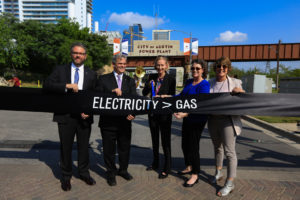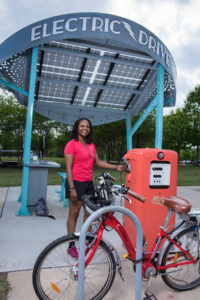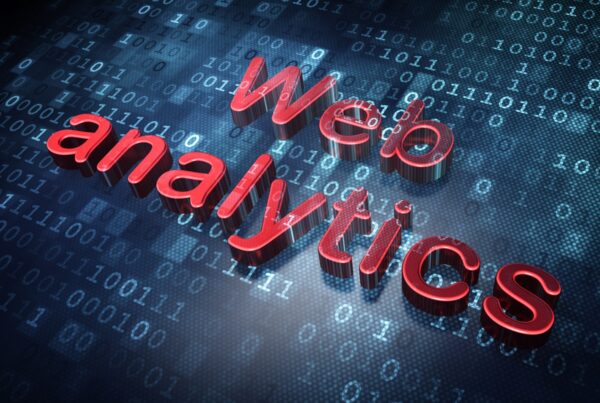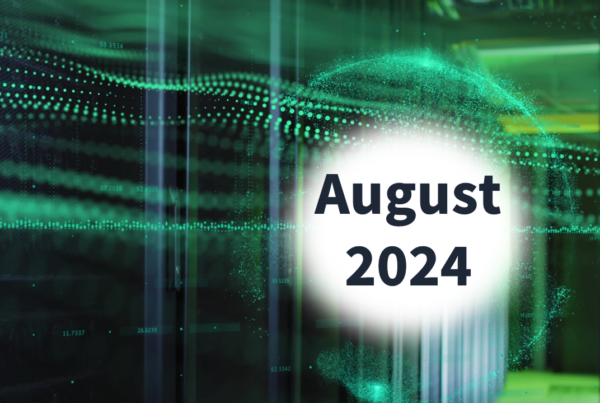

Karl Popham, Manager of Electric Vehicles and Emerging Technology at Austin Energy
Recently I had the opportunity to speak with Karl Popham, Manager of electric Vehicles & Emerging Technologies at Austin Energy. At the heart of one of the most progressive smart cities in North America, Karl is a nationally recognized speaker, research contributor, and book co-author of “Smart Cities: Applications, Technologies, Standards & Driving Factors”. Karl is a self-described “Austinite, through and through”, having lived in the city for over 30 years. He is the electrification lead for Austin’s Smart Mobility Roadmap, and was a core member of the Mayor’s Smart City Challenge team.
What has driven Austin to be so aggressive with respect to its smart energy and transportation?
Austin Energy is a city department, established in 1895. I’m a city employee and fortunate to call Austin my home for over 30 years. As an organization we report to elected officials and frankly it’s in our DNA to be highly engaged with the people of Austin. There is a lot of citizen engagement, and we are very integrated with our community—which is a very vocal community. I’ve thought about smart cities a lot, and here’s how I think of it: a smart city leverages three things; technology, citizen engagement, and policy, with a goal to improve the daily lives of its citizens.
Aside from ideology, the City of Austin was a finalist in The Department of Transportation’s Smart City Challenge. We worked to develop the parameters of our initiative, as well as an aggressive roadmap. Although we were not selected to receive the grant funding, we believed in our vision and roadmap—as such all of those projects envisioned in the Smart City roadmap have been completed or are moving forward in one way or another to include support from a major transportation bond passed by Austinites.

Austin city leaders at the Ribbon cutting of the Electric Drive Project. From left to right: Karl Popham, Austin Mayor Steve Adler, Austin City Council member Ann Kitchen, Austin Energy General Manager Jackie Sargent, and Austin Chief Sustainability Officer Lucia Athens
Austin is passionate about clean air and climate change, and that is at the heart of our roadmap. The obvious role of Austin Energy is to help citizens plug into a grid that reflects sustainable values. Our 2027 plan requires that 65% of our power is generated by renewables. That is part of our larger Community Net-Zero 2050 plan where Austin will achieve 100% net-zero emissions. We are confident that we can get there with our electric generation, and are working hard on the other major source of emissions, mobility.
What types of projects is the city pursuing to meet these goals?
There is no a single technology that has more potential today to clean up emissions from the transportation sector than electric vehicles. The strategy is to move away from fossil fuels and instead plug vehicles into a 100% renewable energy resource. All of our charging stations consume electricity from our Green Choice program, which is a 100% renewable energy credit offering that we also offer to residential and C&I customers. Other example projects that include electric vehicles and other forms of sustainable mobility are:
- Electric Drive, a sustainable mobility showcase in the heart of our Seaholm Eco District, demonstrates electric vehicle charging, bike share, car share, and a solar powered kiosk with integrated storage to charge e-Bikes.
- Austin SHINES, a Department of Energy-funded project, integrates solar and storage for residential and commercial customers. This project creates a virtual power plant that integrates system controls, smart inverters, solar, and storage for grid, commercial, and residential assets to include an EV vehicle to grid demonstration (V2G) with our research partners at Pecan Street.
- We received an ARPA-E grant to integrate EVs into a demand response (DR) program, where we treated them like any other DR asset leveraging open standards and found that customer engagement for EV-based DR was really high compared to other forms of DR, like air conditioning. We don’t need to re-invent the wheel when it comes to our EV grid integration strategy; DR potential is really significant and is also why we launched a residential EV time of use program, EV360, to further shift charging away from our peak times.
- Austin has an extremely high growth curve for EV adoption; in recent years we have seen over 35% growth year-over-year (right now that number sits at about 5,400 EVs total). We have outreach and marketing programs to support this growth.
Quality of life for our citizens is central to our mission as a utility and as a municipal services provider. Recently there was a survey of the people of Austin, and the survey found that the number one item locals don’t like about living in Austin is the traffic and road congestion. We, as a city, are actively working to help resolve that issue, one example is Smart Mobility Roadmap which is currently up for comments.
Based on population growth, Austin cannot sustainably pave its way out of congestion issues; currently we have an almost equal people-to-car ratio, and estimate about 100 new residents coming into Austin each and every day. Our Smart Mobility Roadmap is based on three transportation concepts: shared, electric, and autonomous.
Shared means moving away from single occupied vehicles, the default choice of transportation today, and increasing the amount of shared transportation assets, opportunities and resources. Electric focuses on emissions and noise reductions, to improve air quality and quality of life for our residents. Autonomous refers to autonomous vehicles, of which we want to be an enabler. We see autonomous vehicles potentially as the safest, most affordable, and most reliable form of transportation in the near future.
There’s traditionally been a lot of inequity associated with EV and other DER adoption. How do you make sure that you engage as many people as possible?
We know that there will be load growth associated with EVs, and we want it to be smart load growth. Each utility should have targeted outreach and a feedback loop from a lot of different stakeholders. Our efforts span across our entire community, so we think about the different opportunities, challenges, and barriers that different citizens experience in being able to access clean energy and transportation, and how we can improve those opportunities across the board, and limit challenges and barriers.

Austin is embracing all forms of electric transportation to support people across the city
Half of Austinites reside in multi-family housing. It’s pretty straight forward to support EV and DER adopters at the single-family level, but more of a challenge with multi-family. We launched a multifamily program, for apartments specifically. This ended up starting a domino effect for new apartments, and many new building developers are including EV charging as an amenity to their residents.
It is important for us to be very discerning about the different segments of multi-family, and what their needs are. The needs of the “HOA”/condominium segment, where there are some more legal implications, are different from challenge from those in the low-income segment. We received a grant from the 11th Hour Project for the “EVs are for Everyone” program, which provides program management to support infrastructure for EVs and E-bikes to low-income communities as well as curriculum for local schools as part of our “EVs for Schools” program.
We also think about the high-vehicle-miles-traveled (VMT) segments, which includes electric fleets, busses, taxis and transportation companies like Uber and Lyft. We are taking a holistic approach by looking at how these people are driving around today and into the future, and setting up programs for those markets that include a lot of choice for drivers to meet their particular needs and preferences.
How do these efforts force people from different teams and even city departments to work collectively?
The City of Austin is planning across its departments for Net Zero 2050; these efforts are coordinated with our Sustainability Office city-wide, which works with us to plan metrics, program uptake, etc. One of my executive sponsors for transportation electrification is Austin Energy’s VP of Electric Delivery even though we reside in our Customer Energy Solutions group. With respect to how resources operate with the grid, our strategy is to be a proactive partner and enabler for these technologies and projects. For example, we are working closely with our local transit authority, CapMetro, in the design of an estimated 4MW electric bus fueling depot in North Austin.
It takes a village. Our EV and operations team has grown over the years in not just staff but leveraging scalable processes and technology. Managing public infrastructure includes outsourcing where it makes sense but we have a lot of work integrating systems and processes behind the scenes. For example, when we created the EV 360 Time of Use Tariff, we worked with a team of about 50 people across metering, tariffs, IT, and inspectors—it was a much bigger deal than I thought going into it frankly, and I learned how many villagers it takes to implement that sort of project.
There is process and integration around public charging and how we reimburse our infrastructure hosts. We work closely with the wires folks, IT, and Customer Care & Billing. More and more, we are working with our enterprise Data Analytics and Business Intelligence (DABI) team to understand thigs like customer satisfaction, likely EV adopters, and geographic adoption propensity. We work closely with our marketing and Public Information Office (PIO) to engage stakeholders and ensure our outreach is effective. We have learned a lot to include trial and error, and the willingness of our employees to push themselves to meet bigger and bigger objectives is the key to our success.
Learn more about Austin Energy’s efforts to at www.pluginaustin.com














